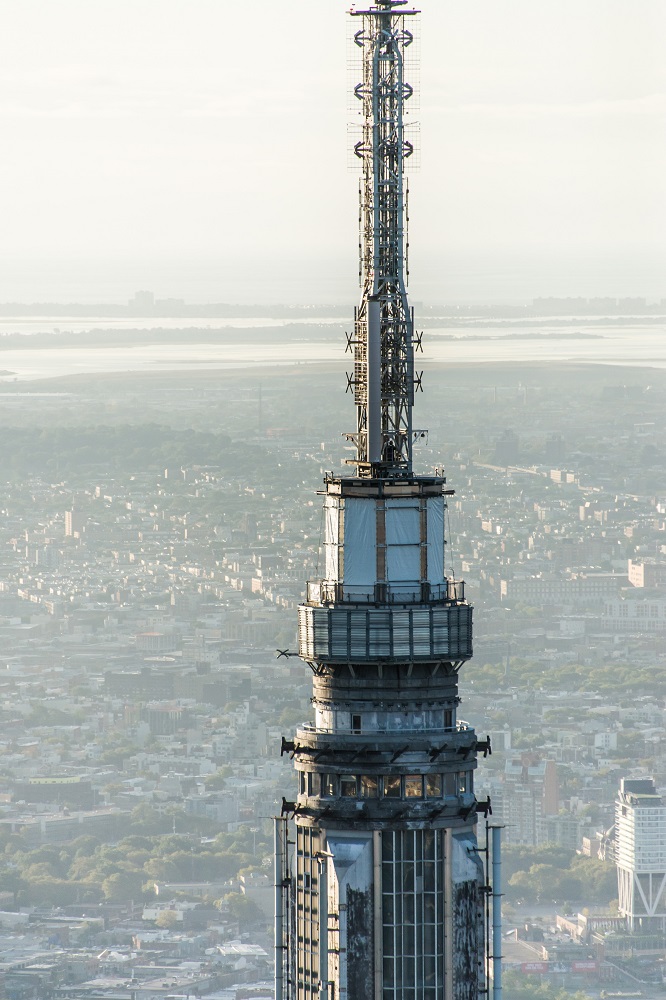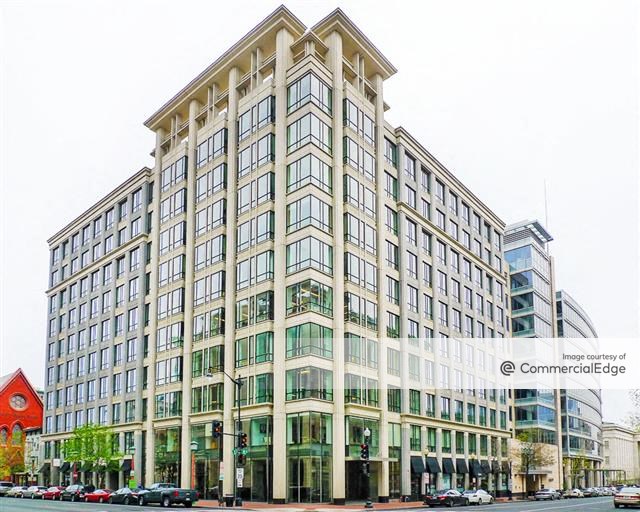Broadcast Tower Project at ESB Uses Innovative “Cocoon”
The project is led by JLL and Skanska and is scheduled for completion in 2017.
By Scott Baltic, Contributing Editor
New York—By the age of 85, anyone or anything could probably benefit from having some work done. For the Empire State Building, that’s taking the form of a project to install a new auxiliary master FM radio antenna, it was announced late last week by the iconic building’s owner, Empire State Realty Trust.
While antennas are nothing new at the former world’s tallest building, what is new is the use of a first-of-its-kind protective “cocoon” at the base of the antenna tower to avoid affecting the building’s day-to-day operations. The cocoon reportedly extends the work window from five hours a day (because of operating hours at the ESB’s two observation decks, on the 86th and 102nd floors) to 24 hours per day, even during inclement weather, and also allows greatly reduced sidewalk scaffolding.
The antenna project will bring an end to disruption of broadcast operations; previously, work on the tower could require a shutdown of certain broadcast operations. The new antenna installation includes a radio-frequency–shielded climbing aperture that allows TV antenna work on the building’s tower to be done without affecting radio signals.
As the largest known construction enclosure ever assembled atop an occupied skyscraper, this cocoon strategy “has the potential to change the construction processes of other existing and functioning skyscrapers around the world,” according to Empire State Realty Trust.
In addition to the installation of the antenna, a new FM auxiliary combiner, reportedly the largest known such piece of equipment in the world, will be installed on the tower. The combiner will enable the radio frequencies of all 19 stations to be transmitted from the newly installed master FM radio antenna.
The tower upgrade project is led by JLL and Skanska and is scheduled to be completed in 2017.
“[T]he Empire State Building constantly innovates, and this new construction protection process in our tower restoration project is just another example,” Thomas Durels, executive vice president & director of leasing and operations for Empire State Realty Trust, said in a prepared statement.
In September 2011, as part of a $550 million retrofit project, the ESB received LEED Gold certification, making it the world’s tallest building and one of only a few National Historic Landmarks to be so rated. The retrofit reportedly slashed energy consumption by more than 38 percent and was estimated to save $4.4 million in energy costs yearly.
Completed in 1931, the Empire State Building remained the world’s tallest building till 1972, when it was surpassed by the twin towers of the ill-fated World Trade Center.








You must be logged in to post a comment.